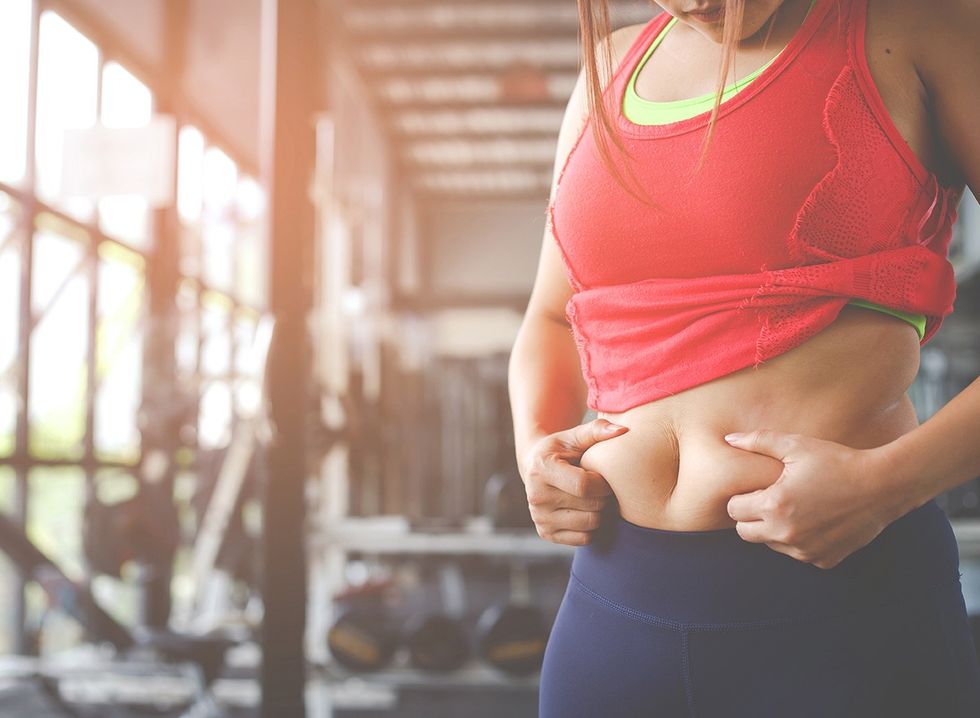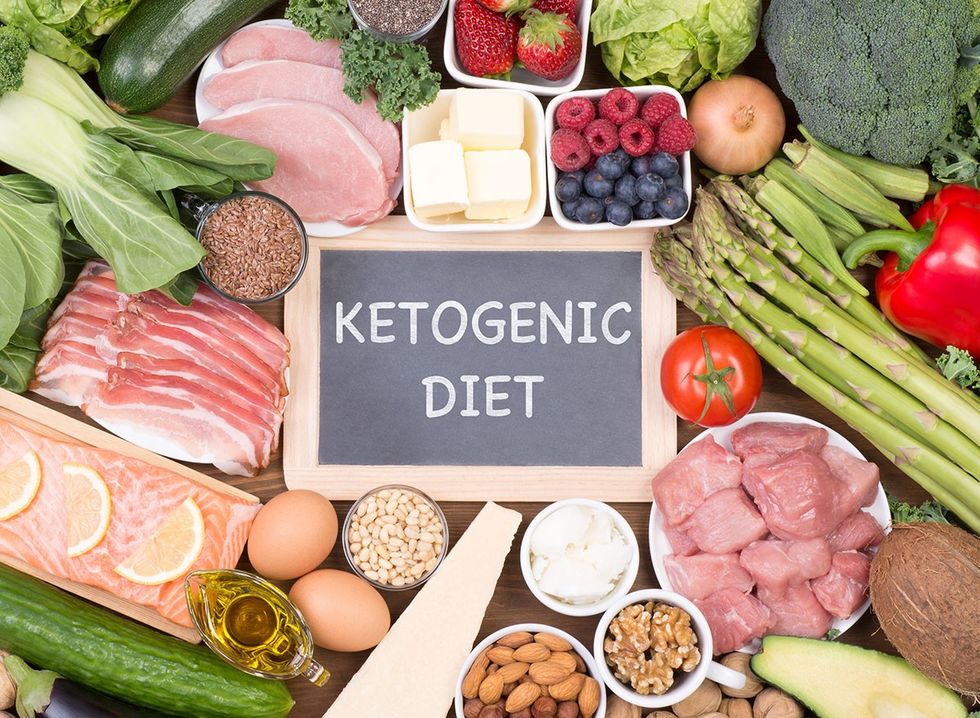Do you feel tired after meals, fight constant cravings, or struggle to lose weight despite your best efforts? Your carb intake might be the hidden obstacle in your weight loss journey. More importantly, your personal carb tolerance could be the key to breaking through plateaus and achieving lasting results.
Dr. Ashley Lucas brings unique expertise to this challenge. As the founder of PhD Weight Loss and a Registered Dietitian with a PhD in Sports Nutrition and Chronic Disease, she's helped thousands of clients collectively lose over 366,000 pounds. Her research-backed approach to carb management has transformed how we think about weight loss.
Let's explore the clear signs that you're exceeding your carb tolerance and learn how to adjust your intake for optimal results.
The Science of Carb Tolerance: Why It Matters
"Carb tolerance refers to your body's capacity to handle carbohydrates without triggering excessive insulin spikes," explains Dr. Lucas in her post. When you consume carbohydrates, your body breaks them down into glucose, which enters your bloodstream. Your pancreas then releases insulin to move this glucose into cells for energy.
"Think of it like this," Dr. Lucas suggests. "If you exceed your daily carb threshold consistently, your body stops burning fat efficiently and starts storing it instead. But if you stay within your unique carb tolerance level, your body can effectively burn fat for fuel."
RELATED: This Nutritionist Shares a 3-Ingredient “Lazy Girl Pasta” That Helped Her Lose Weight
Understanding Your Body's Response to Carbs

"When you eat carbs, your body breaks them down into glucose because this is the simplest form of sugar that your body can utilize," Dr. Lucas explains. This process is normal, but problems arise with overconsumption.
"If you eat more carbs than your body needs consistently, like chronically overeating your unique carb tolerance level, then that excess glucose gets stored as glycogen in your muscles and liver," she notes. Once these stores are full, the remaining glucose converts to fat.
Why Individual Carb Tolerance Varies

Dr. Lucas emphasizes the individual nature of carb tolerance through personal experience: "I can see the difference in me versus my husband. My husband can't tolerate very many at all. I don't tolerate a ton, but much more than he does and still maintain a healthy weight."
This variation depends on several key factors:
- Genetics: Your genetic makeup influences carb metabolism
- Metabolic health: Conditions like insulin resistance affect processing
- Physical activity: Active individuals typically handle more carbs
- Body composition: More muscle mass means better carb tolerance
- Age: Insulin sensitivity often decreases with age.
Clear Signs You're Exceeding Your Carb Tolerance

"If you've got belly fat, you're likely eating above your carb tolerance level," Dr. Lucas warns. She explains that excess carbs particularly affect fat storage around the belly, chest, throat, and head areas.
Key indicators include:
- Post-meal energy crashes
- Constant hunger and cravings
- Weight gain or plateaus
- Increased belly fat
- Difficulty concentrating.
The Insulin Connection: Understanding Fat Storage

"Insulin is often called the fat storage hormone," Dr. Lucas explains, "because its primary role is to regulate blood sugar by moving glucose into your cells." This process becomes particularly important when considering refined carbs.
"When you eat carbs, specifically refined carbs like white bread, sugary snacks, sugary drinks, pasta crackers, your blood sugar rises, it spikes and causes your pancreas to release insulin," she continues.
RELATED: 12 Genius Hacks a Dietitian Uses to Double Her Protein “Without Touching Chicken”
How Your Body Processes Carbs

Dr. Lucas breaks down two distinct metabolic responses: "Insulin sensitive individuals are usually lean, naturally lean, they're active, they have healthy metabolic function. Their cells respond efficiently to insulin, meaning that they can eat a moderate or even high amount of carbs without storing a lot of excess fat."
Conversely, "Insulin-resistant individuals are often overweight or more sedentary. They're dealing with metabolic conditions like diabetes, high blood pressure, high cholesterol, and high belly fat. They're going to have a harder time processing carbs."
Finding Your Personal Carb Sweet Spot

"Luckily, you don't need a bunch of expensive blood tests to figure out your carb tolerance," Dr. Lucas reassures. She recommends a systematic approach:
- Track your carb intake for 1-2 weeks
- Monitor your body's response
- Gradually reduce carbs by 10-20 grams daily.
Making Smart Adjustments

When reducing carbs, Dr. Lucas highlights strategy: "Focus on cutting out the refined carbs first, like white bread, sugary snacks, and sodas. Then replace them with nutrient-dense protein, forward animal protein, healthy fats, maybe some veggies, and maybe some berries because they're lower sugar and higher fiber."
The Science Behind Sustainable Results

While managing carb intake is crucial, research supports a comprehensive approach. According to Mayo Clinic, "A safe and sustainable rate of weight loss is 1 to 2 pounds per week." This moderate approach allows for lasting results rather than quick fixes.
The National Weight Control Registry reports, "About 20% of people who lose at least 10% of their body weight maintain it for at least a year." Success factors include regular physical activity, consistent eating patterns, and ongoing self-monitoring.
Balancing Your Overall Nutrition

The Mayo Clinic recommends that "a balanced diet for weight loss typically includes 40-50% carbohydrates, 25-35% fat, and 20-30% protein." However, these ratios can be adjusted based on your carb tolerance.
National Institutes of Health research says consistent meal timing "aligns with the body's circadian rhythms, potentially reducing the risk of obesity and improving metabolic health."
RELATED: Nutritionist Reveals 8 Signs You're Eating Too Many Carbs
The Protein and Hydration Connection

When reducing carbs, maintaining adequate protein becomes crucial. WebMD notes, "Adequate protein intake within a calorie-reduced diet helps preserve muscle mass during weight loss. Aiming for 25 to 30 grams of protein in each meal supports muscle maintenance."
Additionally, WebMD highlights that "Drinking 8-10 cups of water daily not only supports metabolism but can also help reduce hunger by promoting a feeling of fullness."
Keys to Long-Term Success

Mayo Clinic adds, "Sustainable weight loss requires setting realistic goals and focusing on long-term changes to eating and exercise habits. Behavioral therapy and a strong support system are often key to success."
As per Dr. Lucas's advice, if the process feels overwhelming, it doesn't mean it won't work for you – it just means you might need personalized support to find your optimal carb level. With patience and consistency, you can discover your body's ideal carb tolerance and achieve lasting weight loss success. And if you enjoyed this article, take advantage of these 15 Quick Ways to Lose Body Fat Percentage in a Week.













 Shutterstock
Shutterstock
 Shutterstock
Shutterstock Shutterstock
Shutterstock Shutterstock
Shutterstock Shutterstock
Shutterstock
 Shutterstock
Shutterstock Shutterstock
Shutterstock

 christina_hedges/TikTok
christina_hedges/TikTok Shutterstock
Shutterstock Shutterstock
Shutterstock dietdivatara/Instagram
dietdivatara/Instagram christina_hedges/TikTok
christina_hedges/TikTok
 Shutterstock
Shutterstock Shutterstock
Shutterstock


 Shutterstock
Shutterstock Shutterstock
Shutterstock Shutterstock
Shutterstock Shutterstock
Shutterstock



 I'm a Nutritionist and These 9 High-Protein Snacks Keep My Clients Full While Losing 50 Pounds
I'm a Nutritionist and These 9 High-Protein Snacks Keep My Clients Full While Losing 50 Pounds
 Shutterstock
Shutterstock 2. Processed FoodsShutterstock
2. Processed FoodsShutterstock Shutterstock
Shutterstock Shutterstock/Prostock-studio
Shutterstock/Prostock-studio Shutterstock
Shutterstock Pro TipsShutterstock
Pro TipsShutterstock Shutterstock
Shutterstock Shutterstock
Shutterstock Shutterstock
Shutterstock Shutterstock
Shutterstock Don’t Drink as Much AlcoholShutterstock
Don’t Drink as Much AlcoholShutterstock Most Women on GLP-1s Are Making a Few Common MistakesShutterstock
Most Women on GLP-1s Are Making a Few Common MistakesShutterstock Soda and Sugary DrinksShutterstock
Soda and Sugary DrinksShutterstock Shutterstock
Shutterstock Eat BreakfastShutterstock
Eat BreakfastShutterstock And Improve Insulin SensitivityShutterstock
And Improve Insulin SensitivityShutterstock Belly Flab Strip Tip: Sugar and Fat Calories Leave Its Mark on Your BodyShutterstock
Belly Flab Strip Tip: Sugar and Fat Calories Leave Its Mark on Your BodyShutterstock Shutterstock
Shutterstock The Drugs Mimic the GLP-1 Hormone Naturally Produced by the BodyShutterstock
The Drugs Mimic the GLP-1 Hormone Naturally Produced by the BodyShutterstock 3. Deep-Fried ItemsShutterstock
3. Deep-Fried ItemsShutterstock